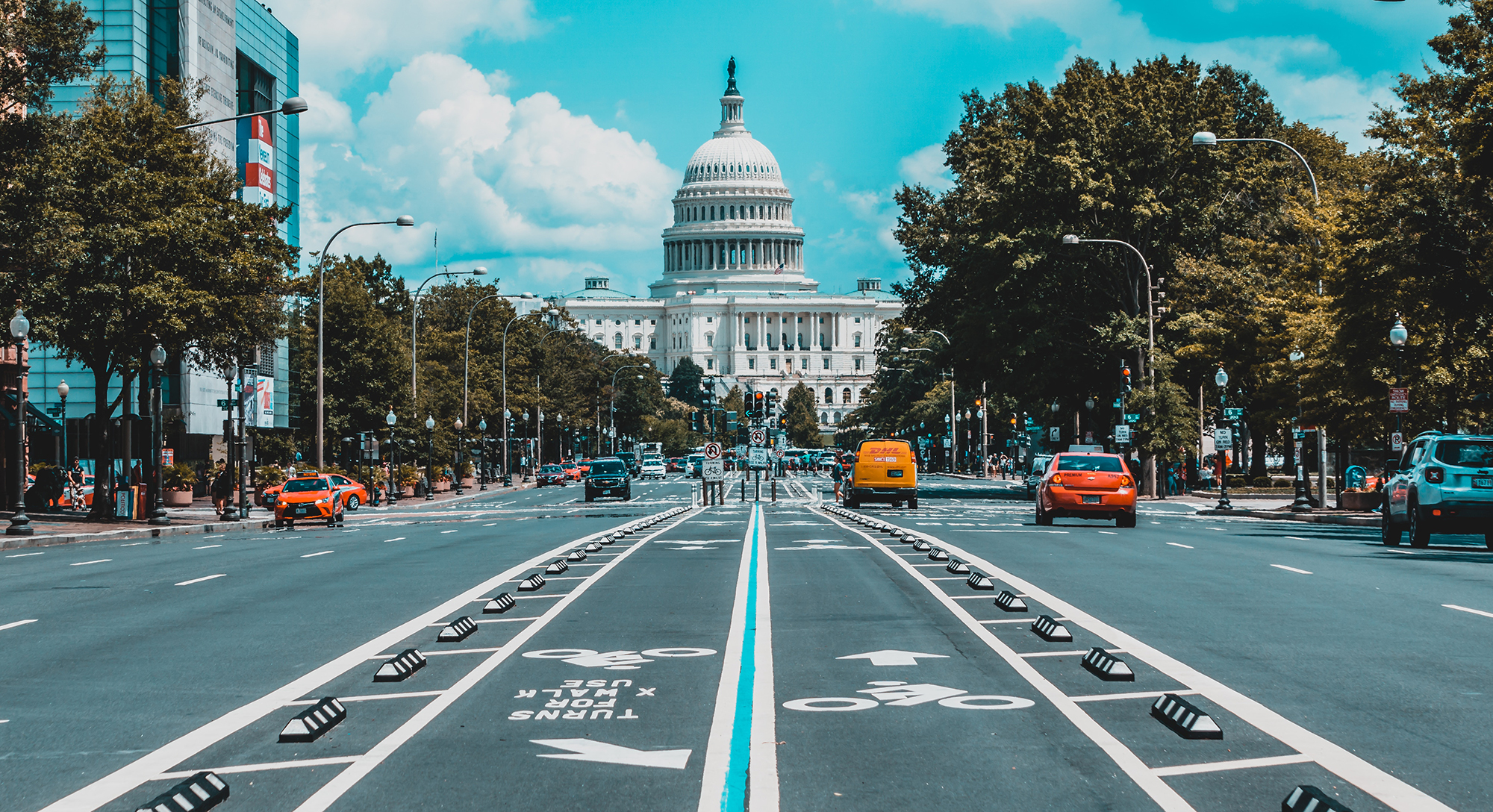
Intelligent Mobility: Moving People, Data and Freight
novembre 20, 2018 — The Big Picture
I love being a Dad. I suspect most dads share that sentiment, so it’s not exactly a news flash. I particularly love being a Dad on Halloween. We have two daughters, 5 and 3, and we all dress up for trick or treating, a favorite American pastime.
This was our first Halloween in Washington, DC. We live in a vibrant, urban neighborhood known for welcoming hordes of costumed kids – not all of DC’s 63,000 plus 5-14 year-olds came to collect candy, but it certainly felt like a popular destination!
I shot a video as we walked around on Halloween – scores of people flooding the small sidewalk space and spilling out onto the very wide street that was built to accommodate cars typically carrying one passenger (and emitting carbon monoxide). It looked like an accident waiting to happen.
Wide streets and narrow sidewalks are the norm, because all cities are designed to move cars as efficiently as possible. In this new era of intelligent mobility, the future should be about how we move people, data and freight in the most efficient way.
We obviously can’t just ban cars. Smart communities around the world that recognize the need to re-think the balance of cars, bicycles, pedestrians and scooters are on the right track. In the United States, we have a history of car culture – but it’s not like that everywhere. In Copenhagen, for example, 62 percent of residents bike to work and school in all types of weather. It is part of their culture and a way of life.
I was in Copenhagen earlier this fall for the World Congress of Intelligent Transport Systems (ITS). During the visit, I was pleased to announce the Intelligent Transportation Society of America’s (ITS America) partnership with the Mobility as a Service Alliance (MaaS Alliance) as we build a Mobility on Demand Alliance (MODA) in the United States.
A one-stop shop for mobility, the goal of Mobility on Demand (or MaaS, as it’s known in Europe) is to provide transportation choices that best suit users’ individual needs. It will help you (as the user) decide the most economical option because time isn’t a factor, determine the fastest way to get to the airport, or choose based on your need to have a private conversation. One application, with a single payment system, will offer transportation options from the start to the end of a trip.
I experienced this in Copenhagen – an app on my phone was all I needed to help me figure out how and when to get from one place to the next. Trains, bikes, buses; when, where, and how much. Life-changing – or more specifically, making life better as it relates to moving around.
At the center of this is data. We hear a lot about big data, but what we really need is big information. By unlocking the power of big data and transforming it into information, public agencies can process it in such a way that will allow individuals to make transportation decisions in real time.
Washington, DC is part of the metropolitan area known as the “DMV,” which includes all of Washington, DC and parts of Maryland and Virginia. It is home to more than six million people and recently surpassed Philadelphia as the sixth largest metropolitan area in the United States. As I’m writing this, Amazon just announced one of its two new headquarters will be in northern Virginia, so the region will continue to grow. It has three major airports, Amtrak rail service, a metro system that runs through the three jurisdictions, and interregional buses that travel to and from New York City multiple times a day.
Instead of operating in silos, imagine if different entities throughout the region could work together to provide more intelligent transportation options by aggregating and disseminating data and translating it into actionable information. Why is this important? Because when I fly into Baltimore-Washington International Airport, I will have information at my fingertips that will help me decide whether I want to take ride-share into downtown Washington or jump on the next Amtrak train. If there is a crash on the Beltway that is having ripple effects on all routes, I’ll know about it. It will give consumers real-time information to make commuting decisions. Americans spend an average of 41 hours a year in traffic, and to a person, I’m sure we all would be thrilled to reclaim some of that time.
That’s what intelligent mobility is all about – creating a better future that is safer, greener, and smarter. I can’t wait to see how Washington re-imagines moving people on Halloween and every other day in the years to come.